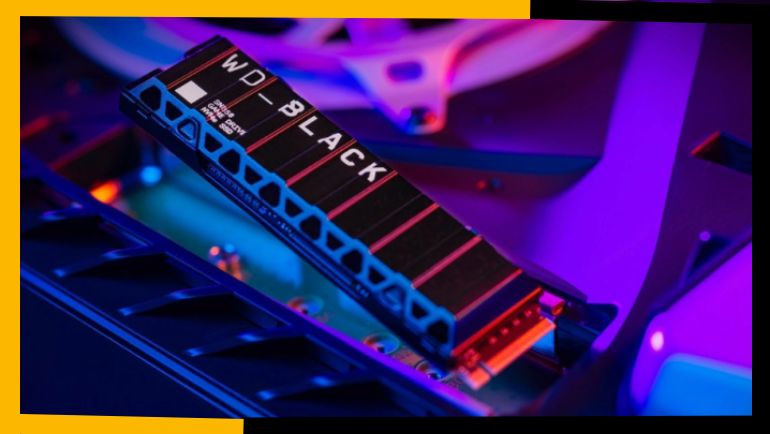
The following section will cover the working of mixed-use, read-intensive, and write-intensive SSDs, and their usage and differences.
Mixed Use vs. Read Intensive vs. Write Intensive SSD: A Detailed Comparison
Mixed-use, read and write SSD comes in different interfaces like PCIe, SAS, or M.2. Some, also come with a hot-swapping feature to allow easy replacement during maintenance. But more importantly, these SSDs are classified based on the Number of Writes Per Day (DWPD). Following is a general guide to DWPD which is important to consider before buying SSDs.
- Read Intensive has less than or equal to 1 DWPD (>= 1)
- Mixed-use Intensive has over 1, but less than 10 DWPD (> 1 < 10 DWPD)
- Write Intensive has equal or less than 10 DWPD (<= 10)
A 1 TB read-intensive SSD has 0.5 DWPD. It means that the drive can write 500GB of data every day for 5 years, and will not wear. Similarly, a 1TB write-intensive SSD having 3 DWPD can write 3 TB of data every day. However, because of less space, the data is overwritten.
The same principle applies to the mix-use intensive SSDs. Monitoring DWPD closely can extend your SSD life span and help you choose the best SSD type. It’s important to note that the DWPD may change with different NAND flash cell types such as SLC, MLC, QLC and TLC.
| Feature | Read Intensive | Write Intensive | Mixed Use |
| Interface | SAS, SATA, PCIe/NVMe, M.2 | SAS, PCIe/NVMe, M.2 | SAS, SATA, PCIe/NVMe, M.2 |
| Endurance | >= 1 DWPD | >= 10 DWPD | > 1 and < 10 DWPD |
| Typical workload | High-read/low-write applications | High-write/Low-read applications | Balanced read/ write applications |
| Applications | Database | Big Data Analytics | Cloud Computing |
Read Intensive Solid State Drives

Read-intensive SSDs have fast read speeds that allow quick access to data due to their fast NAND flash memory. They ensure a high level of reading ability with fewer write operations, such as web servers, word processing, and content delivery systems.
Following is the list of workloads that require intensive read speeds.
- Database (Low End)
- Security
- Social media
- Analytics
- Medical Imaging
The speed of read-intensive drives is greatly impacted by different interfaces like M.2 NVMe or M.2 SATA. Here is a list of read-intensive SSDs from Computing World’s collection of storage devices for sale:
Write Intensive Solid State Drives

Write-intensive SDDs have fast write speeds that allow fast data writing and modification. They ensure a high level of writing ability with fewer read operations. For example: Video editing, high-end gaming, and database servers are examples of write-intensive operations.
Following is the list of workloads that require intensive write speeds, where creating, modifying, and saving data are being done continuously.
- Big Data Analytics
- Storage and Database
- Scientific and Engineering (high)
- Financial Computing
- Online Transaction Processing (OLTP)
Computing Worlds offers a range of write-intensive SSDs for sale at competitive prices, some best products are as follows:
Mixed Use Intensive Solid State Drives

Mix-use intensive SSDs are a blend of read and write speeds. They are best suited for high Input and Output (I/O) applications. It is best suited for workloads that require balanced DWPD. For example: computing, shared connections, personal use, etc. However, it is important to note that the performance of Mixed Use intensive SSDs varies with interfaces like NVMe or SAS.
Following is the list of workloads that require mix-use intensive SSDs.
- General Purpose Computing
- Cloud Computing and Storage
- General Business Applications
- IT Infrastructure (File / Print)
- Collaboration (SharePoint / Messaging)
Many mixed-use-intensive SSDs are available at Computing Worlds for sale, some of which are listed below:
You can request a free bulk quote for the required number of drives.
Frequently Asks Questions:
How can I optimize the system for read-intensive workloads?
Regularly monitor read-intensive SSD I/O, CPU usage, and memory consumption to optimize resource allocation.
What is the difference between write-intensive and mixed-use SSDs?
Write-intensive SSD has a high speed of writability, while mixed-use SSD has balanced read and write speed.
Should you always use a read-intensive SSD?
No, the read-intensive SSD is best for high-read workloads. So, it is always wise to identify the workload before buying any type of SSD.
Read Intensive SSD is suitable for operations that require frequent reads. While write-intensive is used for applications that require frequent writes. However, if an application requires a balance between the two, mix-used SSDs are the best choice. All aforementioned SSDs have their unique features and applications.
Enterprise also opts for read/write or mixed-use external hard drives to better optimize their data backup and security. The pros and cons of external hard drives make them a sought-after product in the data industry. The DWPD is crucial before selecting an SSD as it determines the drive lifespan and performance. Moreover, the drive interface SATA or SAS and features such as wear leveling also impact the performance and read disturbance.






